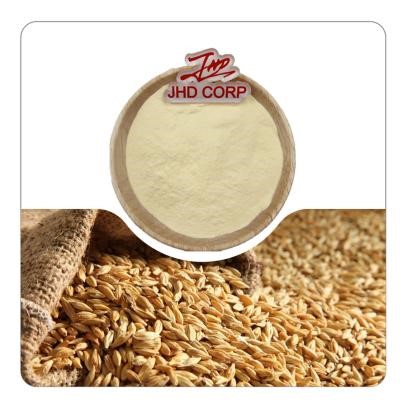Welcome to JHD Nutrasource!
Shop
Barley Malt Extract Powder
Barley Malt Extract Powder is a natural sweetener and flavor enhancer derived from sprouted barley grains that have been dried and processed to extract their sugars, vitamins, minerals, and amino acids. It is commonly used in the food and beverage industry for its rich, malty flavor and its ability to add a touch of sweetness without being overly overpowering.
Description
| Product Name | Barley Malt Extract Powder |
| Appearance | Brown Powder |
| Specification | 10:1 |
| Test Method | HPLC |
| Source | Hordeum vulgare L. var. distichon (L.) Hsü |
| Certificate | Kosher/Halal/ISO/CGMP/Organic etc certificates |
Functions
- Sweetener: It serves as a natural sweetener in various food and beverage products, offering a lower glycemic index compared to refined sugars.
- Flavor Enhancer: Barley malt extract is used to enhance the flavor of foods, providing a rich, malty taste that complements many dishes.
- Nutrient Source: It contains a variety of nutrients, including B vitamins, iron, and amino acids, making it a nutritious addition to the diet.
- Texture Improvement: In baking, it can help improve the texture and moisture content of baked goods.
- Preservative: The natural sugars in barley malt extract can act as a preservative, extending the shelf life of certain food products.
Applications
- Baking: Barley malt extract is used in breads, cakes, cookies, and other baked goods to add flavor and improve texture.
- Confectionery: It is used in candies, chocolates, and other confectionery products for its sweetening properties and flavor.
- Beverages: Barley malt extract is used in beer, soft drinks, and other beverages to enhance flavor and sweetness.
- Condiments: It can be found in sauces, gravies, and other condiments to add depth of flavor.
- Health Foods: Barley malt extract is used in health foods and supplements for its nutritional benefits.
- Animal Feed: It is also used as a nutritional supplement in animal feed to improve the palatability and nutritional value of feed.
- Cosmetics: In some cosmetics, it may be used for its potential skin benefits, although this is less common.

